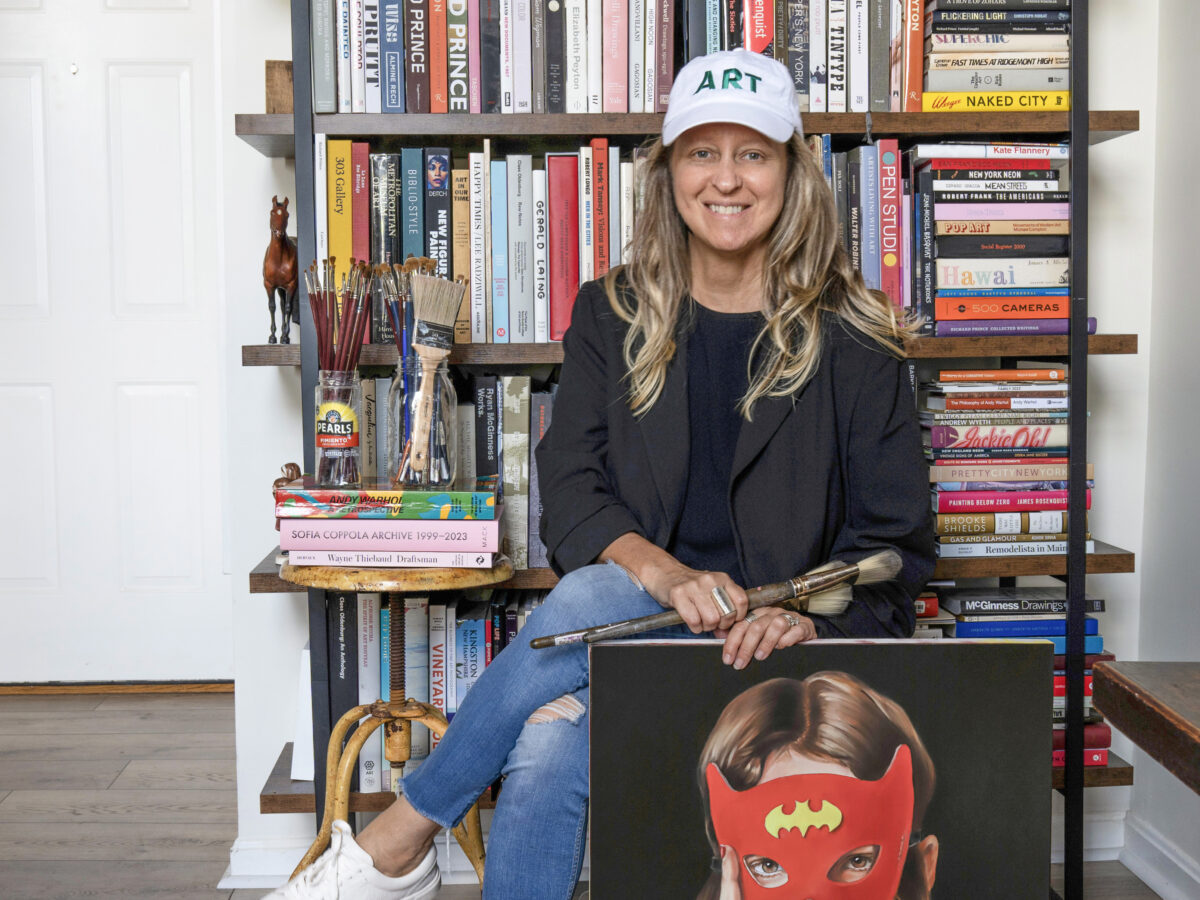Drawing on experience

Fueled by a passion for contemporary art and portraiture, Tara Lewis inspires students to get creative.
Tara Lewis believes all students are artists, whether they have been sketching for years or have not picked up a paint brush since elementary school. A painter who often shows her work in New York City galleries, Lewis has taught painting, drawing, 3D design, printmaking and photography at all levels around a Harkness table in the Frederick R. Mayer Art Center. She draws on her dual passions in contemporary art (especially pop art) and portraiture to inspire students. “I love to weave the contemporary art world into my course content in a very impactful and tangible way,” she says.
Lewis regularly invites working artists to meet and work alongside students. American artist William Wegman visited campus to discuss the whimsical compositions he creates featuring dogs — mostly his Weimaraners in various costumes. Casey Cadwallader ’97, creative director for the fashion brand Mugler, made a guest appearance. Portrait artist Nicolas Coleman ’16 set up a mini studio in Lewis’s classroom and painted in tandem with students.
Some of these visits lead to further inspiration and connection. After hosting painter Will Cotton, several of Lewis’s former students went on to become studio assistants and interns. “The students gain technical inspiration that enhances their own studio practice,” Lewis says. “But it’s great when alumni come into the art classroom because I have them talk about what they were creating in high school or simply what they were like then. I want the students to realize that artists were actually 16 once too.”
Lewis enthusiastically shares personal experiences and insight in her ART408: Advanced Projects: Painting Portraits course. “My own studio practice is rooted in portraiture, and I love collaborations due to the unexpected and rewarding outcomes that can occur,” Lewis says. “I can’t help but let who I am spill into the classroom!” Early in the course, Lewis introduces possible portrait subjects through music videos, photography, literature, other artists’ work and more. Students develop a concept for the portrait they want to create, find a model, then create a portrait throughout the term.
Last spring in New York, a chance collaboration with model Brooke Shields led to an exhibition of Lewis’s pop culture-infused portraits of her and her daughters. She uses that example to motivate students.
“I love to share tips about the portrait process,” Lewis says. “I tell students to be present in the moment — know your concept, idea and subject you wish to portray. Make a documentary on canvas!”